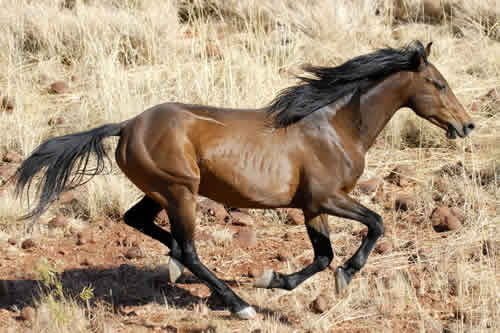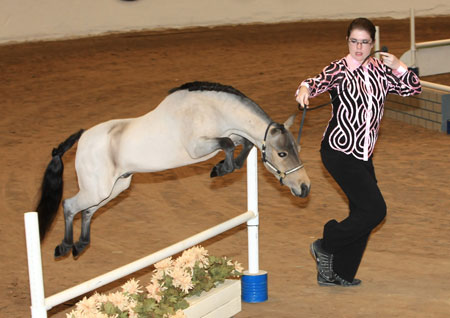



|
Brumby Qualities
The Brumby horse qualities are those of free spirit and strength. They have been a breed that was once kept by local settlers just getting started on their new lives in Europe, to becoming a breed that is lose and set free to roam the fields as they wish. This lifestyle has led to them gaining a poor reputation as being wild animals that cannot be trained, and though they still can be, they just aren't. They can be found in the areas of Queensland, Western Australia, and Southern Australia as well.
Brumby Temperament
The Brumby has a well known temperament for being rough, so rough indeed that they are not easily trainable. This is not necessarily true as they can be trained, they're just considered wild animals at this point in their lives and so few ever bother to train them.
Brumby Appearance
The looks of a Brumby horse are that of strength and agility. This breed was made to run and they have the body framing to do exactly that. Their height can vary so greatly due to their outside, wild style of breeding that there is no definite recorded height range for these animals. They can range from a pony size that stands at around ten hands and go on to being one that stands at around sixteen hands tall as full grown adults. They have all sorts of body shapes and sizes and also have fur coats to match that irregular record keeping. They generally bode a pattern on their fur, but this type can truly have any solid or pattern on their frames.
Brumby Upkeep
Taking care of a Brumby horse is simple as they are still wild animals. Now, in the event one would like to attempt to raise a Brumby horse from the beginning of the breeding process, then could have a very sweet and well trained creature on their hands. They are able to reside in any climate range and have no major reported illnesses.
Brumby History
The Brumby horse came to the world by New South Wales, Australia. It was just around the beginning of the eighteenth century when one eager settler by the name of James Brumby began to permit his own private horses to roam about freely. When locals would inquire who owned them, they would all reply with "They're Brumby's." Their name continued on and they became a very famous horse breed to the Aussies, almost as popular as the beloved koala or the kangaroo! They are a well mixed breed, having an influence from just about anywhere you can think of inside Europe. The horses, for some reason at the time, were set to roam freely and as a result, Australia possesses the largest amount of free roaming horses in the world. Considering they are a wild animal essentially running free, they have developed into a breed that many local Aussies claim are a nuisance. When you combine that large of an amount of horses and allow them to roam about, they can lean toward the side of causing trouble. For this exact reason, many local farmers are furious with the Brumby horses as they tend to destroy fencing work and trample on agriculture.
|